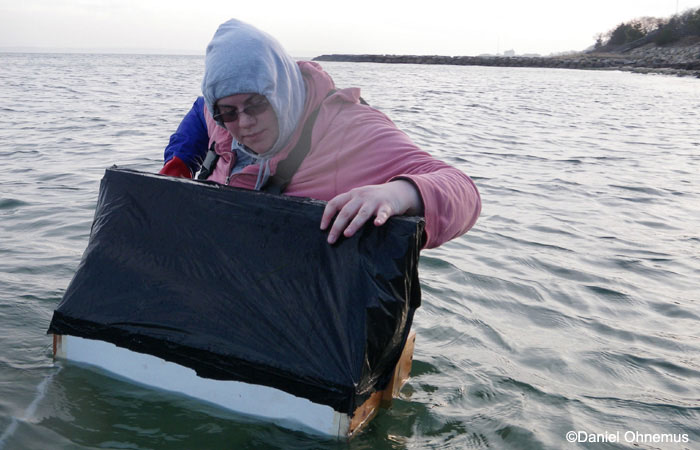What Does Ocean Acidification Mean for our Coasts?

This post is a collaboration between Sarah Cooley, Ph.D. (Ocean Conservancy) and Meredith White, Ph.D. (Bigelow Laboratory for Ocean Sciences).
As we dig deeper into how ocean acidification will affect our oceans, many scientists are also starting to talk about how it affects our coasts. This is a new focus for scientists and one ripe for new learning. In this post, we will give you a window into the coastal factors that are driving acidification and the solutions at hand.
Here’s how it breaks down. When people refer to ‘ocean acidification,’ they are usually talking about changes in water chemistry that happen when the ocean takes up carbon pollution from fossil fuels. Scientists can see this very clearly at study sites in the middle of the ocean, far away from land. But, ocean acidification is having an impact closer to shore as well. The impacts from acidification to West Coast oyster growers and the losses they suffered are well-known. It’s one of the reasons East Coast states are deciding to act. Just last week, a Maine commission held its first meeting to figure out what the state can do about acidification. Maryland’s task force meets this week. Much of their focus will be on the near-shore drivers of acidification.
Absorption of carbon pollution from the atmosphere isn’t the only thing that affects seawater acidity. In coastal areas, differences in the makeup or amount of river discharge and heavy pollution from land (e.g., stormwater and agricultural run-off) also change water acidity. Most rivers naturally increase seawater acidity and worsen ocean acidification. Other activities can make things worse by increasing runoff (e.g., from a large parking lot or by melting glaciers) or by changing the natural balance of rock particles carried in the river (e.g. erosion from development projects). These rivers then acidify the coastal ocean at higher rates than before. In addition, fertilizer pollution or sewage runoff can cause huge algae blooms. In the worst case, some of the blooms could be toxic, similar to what has impacted Toledo, Ohio’s water supply over the last four days. When the algae die, they release huge amounts of extra carbon dioxide that also acidify the water. Recent research shows that this makes the water even less able to naturally balance out these disruptions.
In the past few years scientists have started to focus on coastal factors that worsen acidification, as our ability to measure these changes near the shore has grown. When we started working on ocean acidification about eight years ago, coastal issues weren’t really a focus for the ocean acidification community. But now, addressing these coastal factors is a key part of dealing with ocean acidification. Communities have a lot of options available to them, starting with local actions like reducing coastal pollution and wisely managing polluted runoff. While these coastal factors are critical, they are just a first step. To fully address ocean acidification, we will also need to reduce the amount of carbon we’re putting into the atmosphere. By taking care of our coasts and keeping the big picture of reducing carbon in mind, we can ensure that our oceans are healthy and productive.
Meredith White, Ph.D. has been a postdoctoral researcher at Bigelow Laboratory for Ocean Sciences since March 2013. Her research focuses on biological impacts of ocean acidification, and she is serving as a member of Maine’s Commission on acidification. She is particularly fond of marine invertebrates, and she has a knack for spotting lobster art with the wrong number of legs. Follow her at @CoastalMer and lobstersaredecapods.tumblr.com).